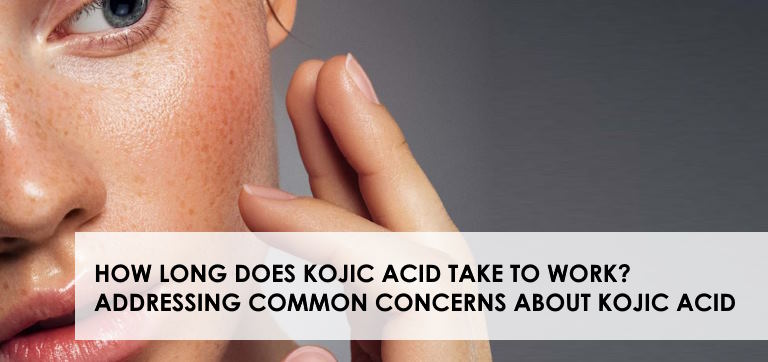How Long Does Kojic Acid Take to Work? | Addressing Common Concerns About Kojic Acid
Table of Contents
Are you struggling with dark spots, uneven skin tone, or hyperpigmentation and on the hunt for an effective remedy? If so, you may have probably come across kojic acid as a potential solution. But how long does kojic acid take to work on your skin?
In this comprehensive guide, we’ll address such common concerns regarding kojic acid products and review their efficacy for hyperpigmentation-associated conditions based on scientific research and real user experiences.
What is Kojic Acid?
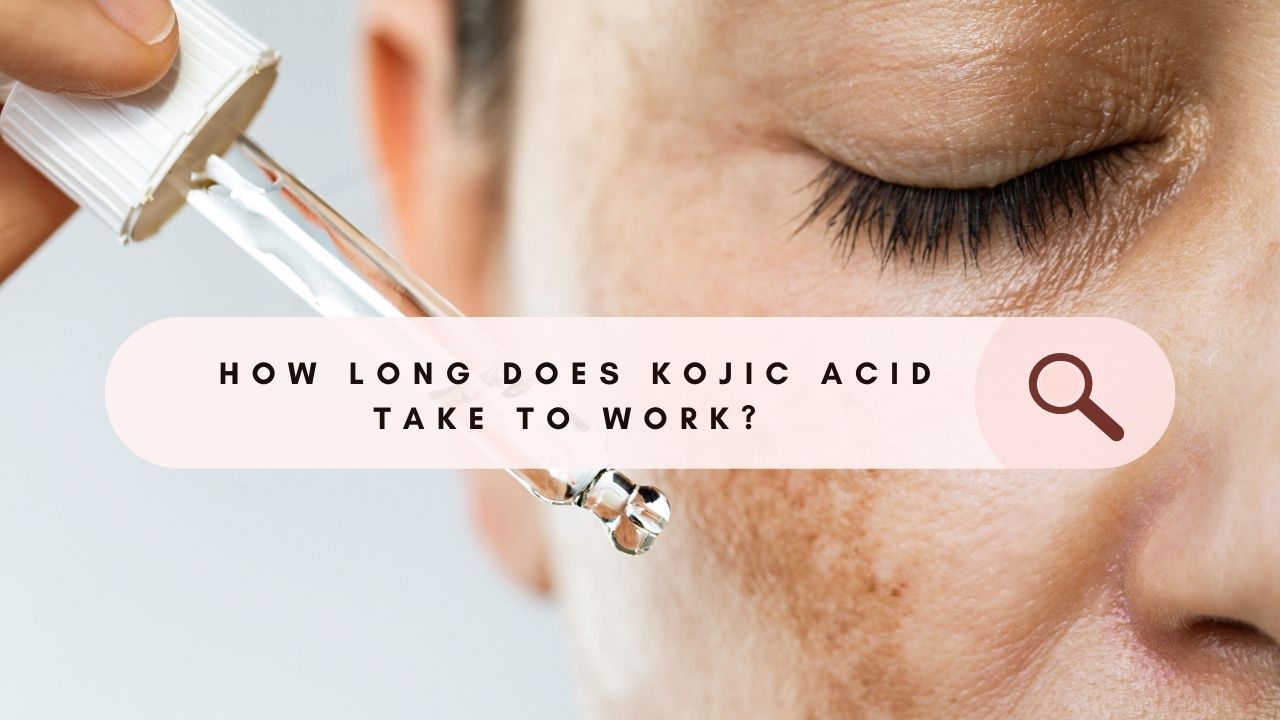
Kojic acid is a natural compound derived from various fungi, particularly Aspergillus oryzae, which is commonly known as koji mold. The compound first gained attention for its ability to inhibit the formation of pigment in plants, leading to its use in various industrial and medical applications, including as a skin-lightening agent.
Kojic acid is widely used in skincare products primarily for its skin-lightening properties. It is commonly found in:
- Serums and Creams: These formulations target hyperpigmentation and are often used to treat dark spots, melasma, and freckles.
- Soaps: Kojic acid soaps are popular for overall skin brightening and to address uneven skin tone.
- Lotions and Toners: These products incorporate kojic acid to maintain an even complexion and reduce the appearance of dark spots.
Mechanism of Action
Tyrosinase is an enzyme that is crucial in the production of melanin, the pigment responsible for skin color and kojic acid chelates the copper ions in tyrosinase, rendering the enzyme inactive and thus preventing the conversion of tyrosine to melanin eventually leading to lighter skin over time.
Scientific Studies Supporting Its Effectiveness
Numerous studies have demonstrated the effectiveness of kojic acid in skin lightening.
- A study published in the Journal of Drugs in Dermatology found that kojic acid significantly reduced hyperpigmentation in patients with melasma compared to a placebo.
- Research in the International Journal of Molecular Sciences showed that kojic acid, when combined with other skin-lightening agents like glycolic acid, provided enhanced depigmenting effects.
How Kojic Acid Differs from Hydroquinone, Vitamin C, and Arbutin
- Hydroquinone: Hydroquinone is a powerful skin-lightening agent that works by inhibiting tyrosinase and causing selective damage to melanocytes. Unlike kojic acid, hydroquinone can have more severe side effects, including ochronosis with prolonged use.
- Vitamin C: Vitamin C is an antioxidant that lightens skin by reducing oxidative stress and inhibiting tyrosinase. While effective, it is often less potent than kojic acid and more unstable in formulations.
- Arbutin: Arbutin, derived from the bearberry plant, also inhibits tyrosinase but is generally considered milder than kojic acid. It is often used in combination with other agents for enhanced effects.
How Long Does Kojic Acid Take to Work on Skin?
Typical Time Frame for Seeing Initial Results

Most users begin to see noticeable changes in their skin tone within 2 to 4 weeks of regular use of kojic acid products. This includes a reduction in dark spots, a more even skin tone, and an overall brighter complexion.
For significant improvement in hyperpigmentation, including stubborn conditions like melasma, it may take up to 2 to 3 months of consistent use.
Factors That Influence the Effectiveness
- Skin Type: Individuals with lighter skin tones tend to see faster results compared to those with darker skin tones, as melanin production varies between skin types.
- Concentration: Products with higher concentrations of kojic acid (up to 2%) typically yield quicker results. However, higher concentrations also increase the risk of skin irritation.
- Complementary Skincare Routine: Using kojic acid in conjunction with sunscreen, moisturizers, and other skin-brightening agents (like vitamin C or glycolic acid) can enhance results and reduce the risk of adverse effects.
- Frequency of Use: Consistent daily application, as recommended by product instructions, maximizes effectiveness. Using kojic acid products less frequently may delay visible results.
Case Studies and Research Data
A clinical study published in the Journal of Cosmetic Dermatology reported that participants using a 1% kojic acid cream twice daily saw a significant reduction in hyperpigmentation after 4 weeks. The study concluded that kojic acid is a safe and effective treatment for melasma and post-inflammatory hyperpigmentation.
Another study in the Dermatologic Surgery journal found that combining kojic acid with glycolic acid and hydroquinone resulted in faster and more pronounced lightening effects compared to using hydroquinone alone.
Kojic Acid Before and After
Before and After Photos Showcasing Results

Before and after images of a user with melasma, it is showing substantial lightening of dark patches after 6-8 weeks of using a kojic acid cream.

Progress photos of a user with post-inflammatory hyperpigmentation, displaying a marked reduction in dark spots and a more uniform skin tone over a few-week period of using kojic acid soap.
These photos demonstrate the gradual fading of dark spots and pigmentation over time, with initial improvements often visible within the first month. Continued use leads to further lightening and enhanced skin clarity.
Users typically note smoother, more radiant skin as kojic acid works not only to lighten dark areas but also to promote an overall brighter complexion.
Links to Relevant Forums and Discussion Threads, Including Reddit
Reddit Thread on Kojic Acid Results: A discussion where users share their before and after experiences, tips on usage, and product recommendations.
By reviewing the timeline of results, case studies, visual evidence, and real user experiences, consumers can set realistic expectations for the use of kojic acid in their skincare regimen and appreciate its potential benefits.
Addressing Common Concerns about Kojic Acid
Now Let’s address some popular concerns regarding Kojic acid in detail:
Does Kojic Acid Bleach Skin?
Kojic acid does not bleach the skin in the traditional sense of removing melanin already present. Instead, it exerts its effects by inhibiting the enzyme tyrosinase. Tyrosinase is essential for melanin synthesis from tyrosine, an amino acid. By inhibiting tyrosinase, Kojic acid reduces the production of melanin in the skin. This leads to a gradual lightening of hyperpigmented areas over time with consistent use.
Can Kojic Acid Make You Darker?
There is no evidence to suggest that Kojic acid can darken the skin. Its mechanism of action involves inhibiting melanin production. Therefore, regular use of Kojic acid is more likely to lighten the skin rather than darken it.
Can Kojic Acid Permanently Lighten Skin?
The effects of Kojic acid on skin pigmentation are reversible. When applied topically, Kojic acid is not known to permanently alter the melanin-producing cells (melanocytes) or their function. If you stop using Kojic acid, melanin production can return to normal levels over time, leading to a gradual return of the skin to its original tone.
Effective Kojic Acid Products
-

Kojic® Natural Skin Whitening Cream
Azeloglicina 5% + Kojic Acid 2% + Lactokine Fluid 3%
Size: 25g / 0.9oz
USD $27.00 Add to cart -
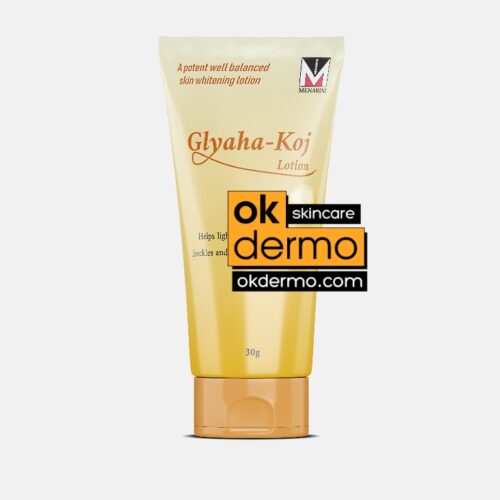
Glyaha-Koj® Skin Lightening Lotion / Soap
Kojic Acid + Glycolic Acid + Hydroquinone
From USD $21.00 Select options This product has multiple variants. The options may be chosen on the product page -
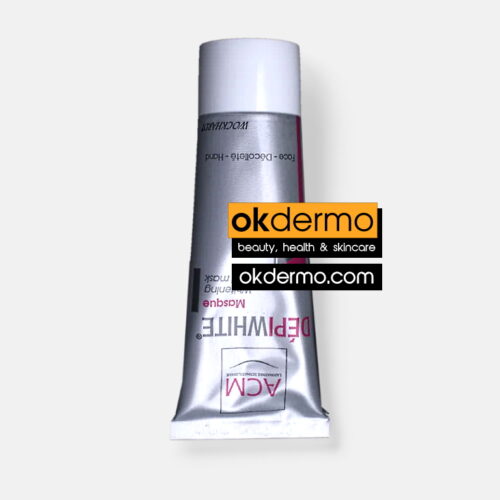
Depiwhite Masque® Kojic Acid Mask
Kojic Acid Whitening Peel-Off Mask
Size: 40ml / 1.35fl.oz
USD $33.00 Add to cart -
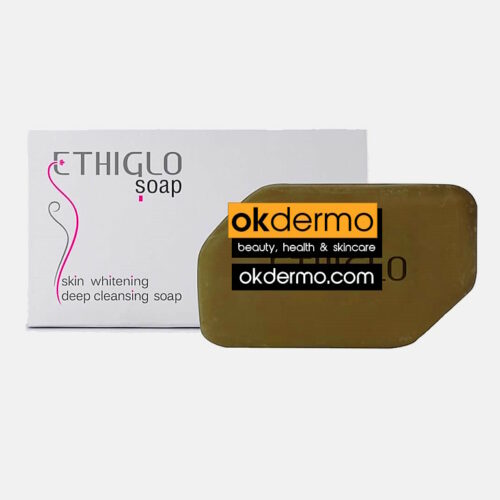
Ethiglo® Kojic Acid Skin Whitening Deep Cleansing Soap
Kojic Acid + Glycolic Acid + TiO2
USD $28.00 Add to cart -
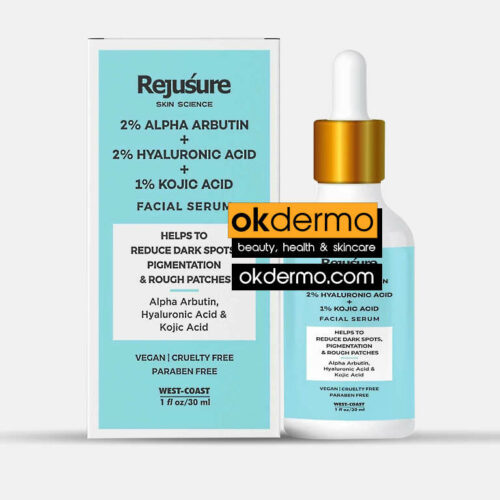
Rejusure® Arbutin, Hyaluronic & Kojic Acids Face Serum
Alpha Arbutin 2% + Hyaluronic Acid 2% + Kojic Acid 1%
Size: 30ml / 1fl.oz
USD $23.00 Add to cart -
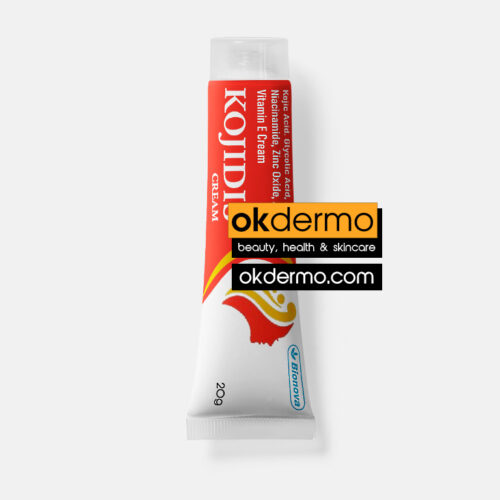
Kojidis® Topical Pigmentation Cream
Kojic Acid + Glycolic Acid + Arbutin + Niacinamide + Zinc + Aloe Vera + Vitamin E
Size: 20g / 0.7oz
USD $22.00 Add to cart
Overview of Kojic Acid Soaps, Creams, and Serums Available on Okdermo
-
Ethiglo Kojic Acid Skin Whitening Deep Cleansing Soap
The Ethiglo Kojic Acid Skin Whitening Deep Cleansing Soap combines the power of kojic acid with deep cleansing properties to lighten and brighten your skin. This soap effectively removes impurities while reducing dark spots and uneven skin tone. It’s suitable for daily use, providing a gentle yet effective solution for achieving a more radiant complexion.
Usage Tips: Use the soap twice daily, in the morning and evening, for best results. Always follow up with a moisturizer to keep your skin hydrated and prevent dryness.
-
Glyaha-Koj Skin Lightening Lotion
The Glyaha-Koj Skin Lightening Lotion is a potent formula combining kojic acid with glycolic acid. This lotion is designed to reduce hyperpigmentation, improve skin texture, and promote an even skin tone. The glycolic acid helps exfoliate the skin, allowing the kojic acid to penetrate deeper and work more effectively.
Usage Tips: Apply the lotion once or twice daily to clean, dry skin. Make sure to use sunscreen during the day to protect your skin from UV damage.
-
Kojic Acid Cream
This Kojic Acid Cream is formulated to target dark spots, melasma, and uneven skin tone. With a high concentration of kojic acid, this cream works effectively to lighten hyperpigmentation and provide a brighter, more uniform complexion.
Usage Tips: Use the cream on affected areas twice daily. For best results, combine it with a gentle cleanser and a hydrating moisturizer.
-
Kojidis Topical Pigmentation Cream
The Kojidis Topical Pigmentation Cream is a powerful blend of kojic acid, glycolic acid, arbutin, niacinamide, zinc, aloe vera, and vitamin E. This comprehensive formula not only lightens dark spots but also improves skin texture and overall health. The additional ingredients work synergistically to enhance the skin’s appearance and provide long-lasting results.
Usage Tips: Apply a small amount of cream to the pigmented areas once or twice daily. Avoid excessive sun exposure and use sunscreen to protect your skin.
-
Rejusure Arbutin 2%, Hyaluronic Acid 2%, Kojic Acid 1% Face Serum
The Rejusure Face Serum combines kojic acid with arbutin and hyaluronic acid to deliver a potent skin-lightening and hydrating solution. This serum is designed to reduce dark spots, hydrate the skin, and improve its elasticity and firmness.
Usage Tips: Apply a few drops of the serum to your face and neck twice daily, before applying moisturizer. This serum is suitable for all skin types and can be used as part of both morning and evening routines.
-
Kojic Acid Whitening Peel-Off Mask
The Kojic Acid Whitening Peel-Off Mask (Depiwhite Masque) offers a spa-like treatment at home. This mask helps to lighten dark spots, remove impurities, and leave the skin feeling smooth and refreshed. It’s perfect for those looking to achieve a brighter complexion quickly and effectively.
Usage Tips: Apply a thin layer of the mask to clean the skin and leave it on for the recommended time before peeling off. Use once or twice a week for best results.
Whether through creams, serums, or the ever-popular kojic acid soap, users seek its gentle yet potent impact on achieving a brighter complexion. However, it’s essential to be mindful of potential kojic acid soap side effects such as temporary dryness or increased sun sensitivity which can be mitigated by starting with a patch test and ensuring proper moisturization post-use.
Conclusion
Whether in the form of soaps, creams, or serums, Kojic acid products are generally formulated to meet diverse skincare needs while prioritizing safety and effectiveness.
Through its mechanism of inhibiting melanin production, kojic acid helps users achieve noticeable results within a reasonable timeframe, typically starting from a few weeks of consistent use. It is important to note that individual responses may vary based on factors like skin type, product concentration, and adherence to a skincare routine.
FAQs
-
How do you know if kojic acid is working?
Kojic acid is primarily used to lighten skin discoloration such as dark spots and hyperpigmentation. You can gauge its effectiveness by observing a gradual reduction in the intensity of these discolorations over several weeks of consistent use.
-
How to make kojic acid work faster?
Consistency and adherence to application instructions are key. Ensure you apply kojic acid as directed, typically twice daily, and avoid missing applications. Combining it with other skin-lightening agents or treatments as prescribed by a dermatologist may also expedite results.
-
Will I get darker if I stop using kojic acid?
Kojic acid inhibits melanin production, which can lead to darker skin spots fading over time. If you discontinue its use without addressing the underlying cause of pigmentation (e.g., sun exposure, hormonal changes), there’s a possibility that untreated factors may cause the return of dark spots.
-
How often should you use kojic acid?
The frequency of use depends on the concentration of kojic acid in the product and your skin sensitivity. Typically, it’s recommended to apply it once or twice daily to clean, dry skin. Start with a lower frequency if your skin is sensitive and gradually increase as tolerated.
References
- Chib, S., Jamwal, V. L., Kumar, V., Gandhi, S. G., & Saran, S. (2023). Fungal production of kojic acid and its industrial applications. Applied microbiology and biotechnology, 107(7-8), 2111–2130. https://doi.org/10.1007/s00253-023-12451-1
- Smit N, Vicanova J, Pavel S. The Hunt for Natural Skin Whitening Agents. International Journal of Molecular Sciences. 2009; 10(12):5326-5349. https://doi.org/10.3390/ijms10125326
- Pérez-Bernal, A., Muñoz-Pérez, M.A. & Camacho, F. Management of Facial Hyperpigmentation. Am J Clin Dermatol 1, 261–268 (2000). https://doi.org/10.2165/00128071-200001050-00001
- Brtko J. (2022). Biological functions of kojic acid and its derivatives in medicine, cosmetics, and food industry: Insights into health aspects. Archiv der Pharmazie, 355(10), e2200215. https://doi.org/10.1002/ardp.202200215
- Nautiyal, A., & Wairkar, S. (2021). Management of hyperpigmentation: Current treatments and emerging therapies. Pigment cell & melanoma research, 34(6), 1000–1014. https://doi.org/10.1111/pcmr.12986
Post by:
Dr.Marcella Jiovanni
Health and Beauty Expert
“Marcella Jiovanni actively promotes the importance of maintaining healthy skin, she envisions the future of dermatology as moving away from pure medical, pharmacological dermatology and flowing more toward a holistic approach to wellness and skincare.”

